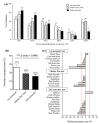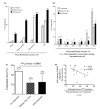Integration of an Image-Based Dietary Assessment Paradigm into Dietetic Training Improves Food Portion Estimates by Future Dietitians
- PMID: 33430147
- PMCID: PMC7827495
- DOI: 10.3390/nu13010175
Integration of an Image-Based Dietary Assessment Paradigm into Dietetic Training Improves Food Portion Estimates by Future Dietitians
Abstract
The use of image-based dietary assessments (IBDAs) has rapidly increased; however, there is no formalized training program to enhance the digital viewing skills of dieticians. An IBDA was integrated into a nutritional practicum course in the School of Nutrition and Health Sciences, Taipei Medical University Taiwan. An online IBDA platform was created as an off-campus remedial teaching tool to reinforce the conceptualization of food portion sizes. Dietetic students' receptiveness and response to the IBDA, and their performance in food identification and quantification, were compared between the IBDA and real food visual estimations (RFVEs). No differences were found between the IBDA and RFVE in terms of food identification (67% vs. 71%) or quantification (±10% of estimated calories: 23% vs. 24%). A Spearman correlation analysis showed a moderate to high correlation for calorie estimates between the IBDA and RFVE (r ≥ 0.33~0.75, all p < 0.0001). Repeated IBDA training significantly improved students' image-viewing skills [food identification: first semester: 67%; pretest: 77%; second semester: 84%) and quantification [±10%: first semester: 23%; pretest: 28%; second semester: 32%; and ±20%: first semester: 38%; pretest: 48%; second semester: 59%] and reduced absolute estimated errors from 27% (first semester) to 16% (second semester). Training also greatly improved the identification of omitted foods (e.g., condiments, sugar, cooking oil, and batter coatings) and the accuracy of food portion size estimates. The integration of an IBDA into dietetic courses has the potential to help students develop knowledge and skills related to "e-dietetics".
Keywords: dietetic training; image-based dietary assessment; portion size estimation.
Conflict of interest statement
The authors declare that no competing interest exists.
Figures



Similar articles
-
COVID-19 and Virtual Nutrition: A Pilot Study of Integrating Digital Food Models for Interactive Portion Size Education.Nutrients. 2022 Aug 12;14(16):3313. doi: 10.3390/nu14163313. Nutrients. 2022. PMID: 36014819 Free PMC article.
-
Image-Based Dietary Assessment Ability of Dietetics Students and Interns.Nutrients. 2017 Feb 7;9(2):114. doi: 10.3390/nu9020114. Nutrients. 2017. PMID: 28178196 Free PMC article.
-
Feasibility of Reviewing Digital Food Images for Dietary Assessment among Nutrition Professionals.Nutrients. 2018 Jul 27;10(8):984. doi: 10.3390/nu10080984. Nutrients. 2018. PMID: 30060528 Free PMC article.
-
The Next Generation of Dietitians: Implementing Dietetics Education and Practice in Integrative Medicine.J Am Coll Nutr. 2015;34(5):430-5. doi: 10.1080/07315724.2014.979514. Epub 2015 May 11. J Am Coll Nutr. 2015. PMID: 25961884 Review.
-
New mobile methods for dietary assessment: review of image-assisted and image-based dietary assessment methods.Proc Nutr Soc. 2017 Aug;76(3):283-294. doi: 10.1017/S0029665116002913. Epub 2016 Dec 12. Proc Nutr Soc. 2017. PMID: 27938425 Review.
Cited by
-
A Novel Approach to Dining Bowl Reconstruction for Image-Based Food Volume Estimation.Sensors (Basel). 2022 Feb 15;22(4):1493. doi: 10.3390/s22041493. Sensors (Basel). 2022. PMID: 35214399 Free PMC article.
-
COVID-19 and Virtual Nutrition: A Pilot Study of Integrating Digital Food Models for Interactive Portion Size Education.Nutrients. 2022 Aug 12;14(16):3313. doi: 10.3390/nu14163313. Nutrients. 2022. PMID: 36014819 Free PMC article.
References
-
- Freedman L.S., Commins J.M., Moler J.E., Arab L., Baer D.J., Kipnis V., Midthune D., Moshfegh A.J., Neuhouser M.L., Prentice R.L., et al. Pooled results from 5 validation studies of dietary self-report instruments using recovery biomarkers for energy and protein intake. Am. J. Epidemiol. 2014;180:172–188. doi: 10.1093/aje/kwu116. - DOI - PMC - PubMed
-
- Livingstone M.B., Prentice A.M., Coward W.A., Strain J.J., Black A.E., Davies P.S., Stewart C.M., McKenna P.G., Whitehead R.G. Validation of estimates of energy intake by weighed dietary record and diet history in children and adolescents. Am. J. Clin. Nutr. 1992;56:29–35. doi: 10.1093/ajcn/56.1.29. - DOI - PubMed
-
- Arroyo M., de la Pera C.M., Ansotegui L., Rocandio A.M. A short training program improves the accuracy of portion-size estimates in future dietitians. Arch. Latinoam. Nutr. 2007;57:163–167. - PubMed
MeSH terms
Grants and funding
LinkOut - more resources
Full Text Sources
Other Literature Sources

